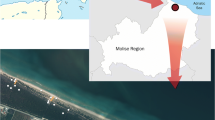Abstract
Dunes that are protected because of their very rich and diverse plant communities are often exposed to excessive visitor pressure. The effects of trampling on the habitat must be known from a conservation viewpoint but also are important for management. To determine the response of plant assemblages to trampling by people, an experimental study was conducted on the state-owned dunes at Quiberon (Brittany, France). Indices of resistance and resilience were used to compare three typical plant communities belonging to the various landscape units: mobile dune, semifixed dune, and fixed dune. The strong contrasts between communities belonging to different successional stages reflect their ecological functioning. The mobile dune and semifixed dune with their low resistance contrasted with the fixed dune. Only the vegetation cover of the semifixed dune benefited from long-term trampling and had a very high resilience (134%). This response could be explained by a good balance of two opposite factors: soil compaction increasing soil stability and moisture content, and vegetation destruction. Because of their low resilience, trampling seems to be harmful for fixed dunes in the long term. The tourist pressure seems easier to integrate in to the mobile dunes and the semifixed dunes if periods of recovery are included in the management.
Similar content being viewed by others
Author information
Authors and Affiliations
Rights and permissions
About this article
Cite this article
LEMAUVIEL, S., ROZÉ, F. Response of Three Plant Communities to Trampling in a Sand Dune System in Brittany (France). Environmental Management 31, 0227–0235 (2003). https://doi.org/10.1007/s00267-002-2813-5
Issue Date:
DOI: https://doi.org/10.1007/s00267-002-2813-5




